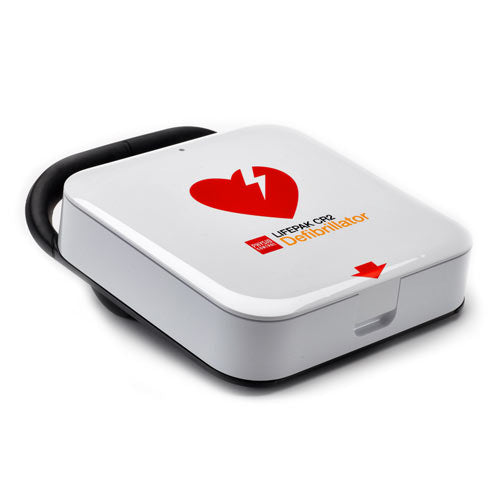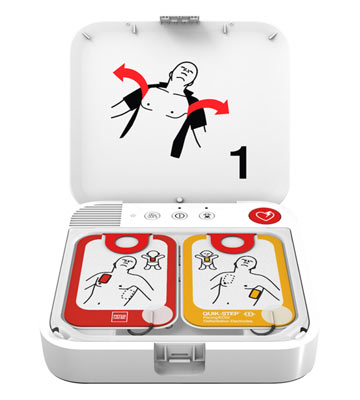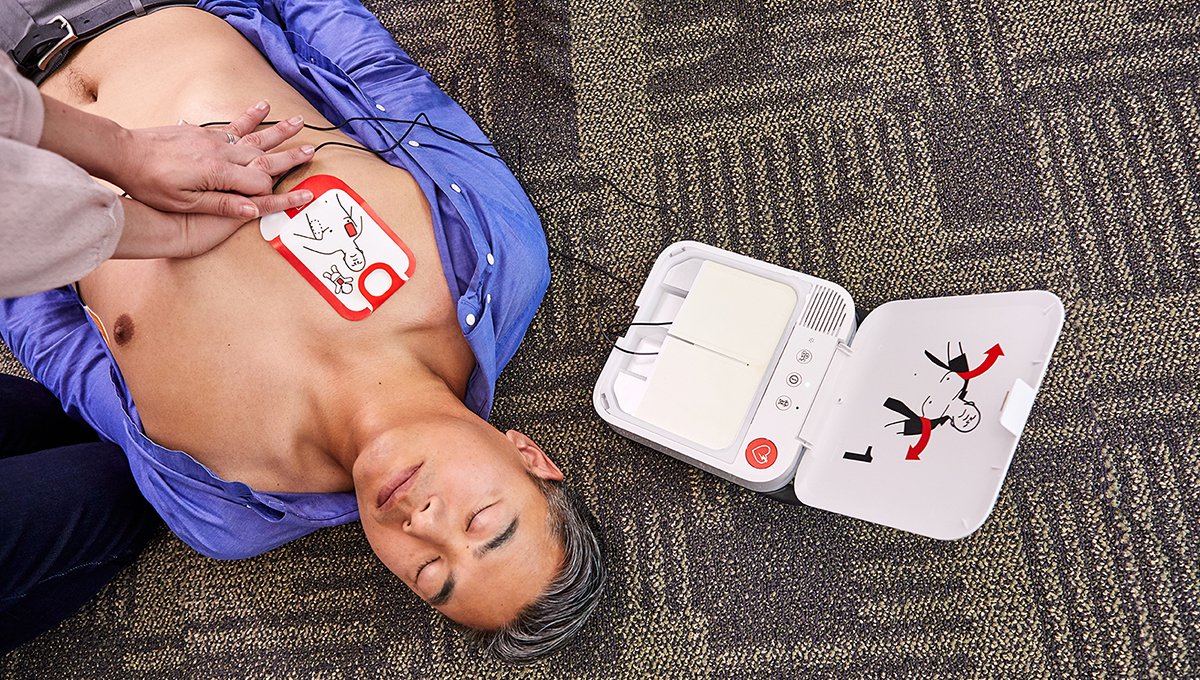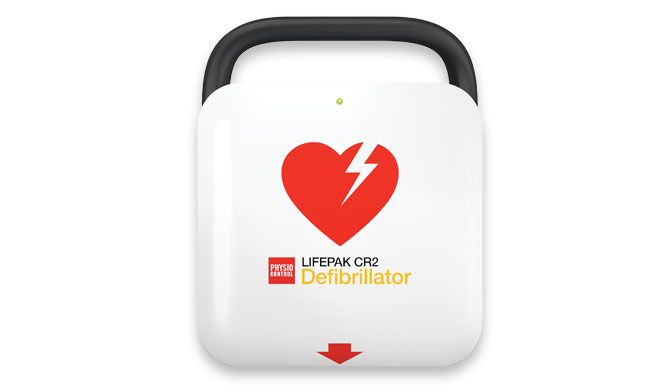Following on from the CR Plus defibrillator range, Physio-Control have continued their innovation with the CR2 USB defibrillator, allowing users who don't want or need WiFi or 3G capability to still have the option to be heart safe with a top-of-the-range, defibrillator device.
- Simple to use
- Bilingual
- Highest available escalating energy, up to 360J
- Child Mode, delivers lower energy levels appropriate for young children without having to change electrodes
- All models - CPR Coaching, including feedback when no CPR is detected, a metronome and instructions on hand placement
- ClearVoice technology, detects background noise and adjusts volume accordingly for clear instruction
What's included:
- LIFEPAK CR2 AED with 8-year Warranty, with
- Metronome and CPR Coaching
- One set of 4-year Adult/Child Electrode Pads
- 4-year Lithium Battery
- Carry Handle
- USB Cable
- FREE AED Management. Notification of expiring supplies and ongoing customer support to make owning and maintaining your AED simple.
Physio-Control LIFEPAK CR2 USB Bilingual - Semi-Automatic is backordered and will ship as soon as it is back in stock.
Couldn't load pickup availability
Free Shipping for AED Purchases
Free Shipping for AED Purchases
Flexible Payment Options
Flexible Payment Options
Price Guarantee Details
Price Guarantee Details
Appreciate your help as always.
Jazz Singh
Description
Features
- Layered, easy to follow design
- QUIK-STEP electrodes for both adult and pediatric patients
- Faster time to first shock
- Bilingual
- Child Mode button
Designed for user confidence
CR2 will keep the rescuer focused on what really matters—saving a life.
Layered design
Layered design with easy to follow bold graphics. Both trained and untrained AED users clearly know how to begin.
QUIK-STEPTM electrodes
Peel directly off the base for faster placement.
Available in Bilingual ( 99512-001410)
Toggle between two pre-set languages when using the device.
Child Mode
Child Mode button delivers lower energy levels appropriate for young children without having to change electrodes.
Metronome and CPR coaching
Quickly sets an effective pace and audibly guides users.
ClearVoiceTM technology
Detects background noise and adjusts tones and voice prompts to ensure they can be heard clearly in noisy environments.
Highest available escalating energy
Up to 360J for more effective shocks as needed.
LIFEPAK TOUGHTM
IP55 rating for challenging environments.
8-year warranty
Backed by an 8-year warranty.
| General Information | |
|---|---|
Warranty |
|
| Accessories | |
Pad life |
|
Battery Life |
|
Semi vs Fully Automatic AED
What Semi- and Fully-Automatic AEDs Have in Common
Both fully- and semi-automatic AEDs function largely the same way:
- Both types of AEDs require that the rescuer properly apply the electrode pads to the patient.
- When using either type of AED to deliver a shock, nobody else can be touching the patient when the shock is administered.
- Neither a semi-automatic nor a fully-automatic AED will shock a patient unless the device detects a shockable rhythm in the patient’s heartbeat. This means there’s no risk in “accidentally” shocking or hurting a person with a normally functioning heart who just happens to be unconscious.
- Depending on the make and model of the AED, rescue instructions will be provided via voice and may include text prompts or light indicators. CPR instructions may also be provided.
- Both types of AEDs provide a life-saving shock to someone experiencing a cardiac event.
Benefits of a Semi-Automatic AED
With a semi-automatic AED, if the unit advises the rescuer that a shock is required, the rescuer has two specific actions to take:
- Ensure everyone is clear and nobody is touching the patient.
- Push the flashing shock button.
Semi-automatic AEDs provide the rescuer(s) with control over when the shock is administered. This can be desirable because it allows rescuers to ensure nobody is in contact with the patient’s body at the time of shock. While an AED won’t shock a patient unless a shockable rhythm is detected, the device doesn’t know if someone else is touching the patient. Delivering an appropriate shock will be beneficial to the patient but may also leak to another person who’s touching the patient at the time the shock is delivered. This may be unpleasant, to say the least, but may also bleed off current needed to re-establish an effective heartbeat.
Benefits of a Fully-Automatic AED
Once the electrode pads are applied to the patient, a fully-automatic AED administers the shock automatically when needed, without any further human action. It gives the rescuer time to stop CPR, advises them to not touch the patient, and gives a countdown to the shock. An example would be: “Shock advised. Do not touch the patient. Do not touch the patient. Shock will be delivered in 3…2…1. {shock} Shock delivered. Start CPR.”
When using a fully-automatic AED, the rescuer isn’t responsible for pushing the button and instead only has one action to take: making sure no one is touching the patient when the shock is delivered.
How to Choose Between Semi- and Fully-Automatic AEDs
When choosing between semi-automatic and fully-automatic AEDs, consider who may potentially use your AED:
- Are they likely to remain cool and calm?
- Will they be inclined to tense up during a crisis?
- Have they had any training in AED use?
- Is the AED going in a public place, so anyone (trained or untrained) could use it?










